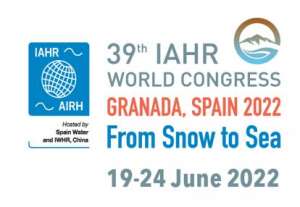Το ΕΛΕ συμμετείχε στο παγκόσμιο συνέδριο IAHR με δύο άρθρα:
UAV-based Remote Sensing Practices for Assessing Coastal Vulnerability
Christina N. Tsaimou, Panagiotis Sartampakos & Vasiliki K. Tsoukala
Dimitra Malliouri, Nikolaos Martzikos & Vasiliki K. Tsoukala
Abstract: Coastal zones are multidimensional dynamic systems that frequently include the inevitably complex interaction between environmental and natural variability along with socio-economic activities. Within the context of applying competent Integrated Coastal Zone Management (ICZM) practices, decision-makers should comprehensively evaluate coastal dynamics.Exposure conditions including climate change impacts, natural hazards, alteration in coastal population characteristics and construction of coastal infrastructure are among the most pressing factors that should be addressed in terms of assessing coastal vulnerability. The physical-based estimation of a Coastal Vulnerability Index (CVI) requires determination of various parameters such as the coastline erosion or deposition. Given the time-dependency of vulnerability, monitoring of coastline evolution is considered to be prerequisite for CVI calculation. Recently, Unmanned Aerial Vehicle (UAV) applications are offering a powerful technology in the field of coastal monitoring. This paper seeks to indicate the utility of UAV-based remote sensing monitoring approaches for a dynamic assessment of coastal vulnerability. For this purpose, a coastal zone at Northeastern Korinthiakos Bay at central Greece was investigated, where ICZM policies are, currently, promoted. Following this, UAV monitoring procedures have taken place aiming at recording current condition of the coastline. To estimate coastline erosion or deposition during the past years, supplementary aerial imagery data provided by the Hellenic Military Geographical Service (HMGS) was utilized. Identification of coastline evolution and, thereafter, the degree of vulnerability enables a proactive planning adapted by relative authorities and managers that can be further expanded towards the advancement of climate change resilience and sustainability of coastal zones.
Abstract: An integrated methodology is presented to ensure coastal structures’ resilience to extreme wave conditions, i.e. their ability to withstand further wave actions without reaching their ultimate limit state. Specifically, a fully probabilistic reliability analysis of a rubble mound breakwater is performed here, in combination with a prediction analysis of the expected time of the structure’s maintenance. The methodology combines information on the joint probability density function of significant wave height, spectral peak wave period, and storms’ duration and calculates the probability of occurrence of different levels of damage in the structure’s lifetime via the use of a fully probabilistic reliability method. In this step, the breakwater’s armor element’s state is supposed to has a zero-damage level, before being exposed to each storm. Moreover, a resilience analysis is also described and applied by using the armor’s damage evolution model by Melby and Kobayashi (1998), estimating the expected year that the breakwater’s maintenance should take place. In this approach, the expected damage of the breakwater’s armor at the end of a storm is a function of the storms’ characteristics and the corresponding damage at the end of the previous storm. The methodology is applied to hindcast data at a location of the Barcelona coast in Spain. Thereby, an insight is gained for the extreme forcing on coastal structures induced by coastal storms, enabling the assessment of structures’ probability of failure and repair.

